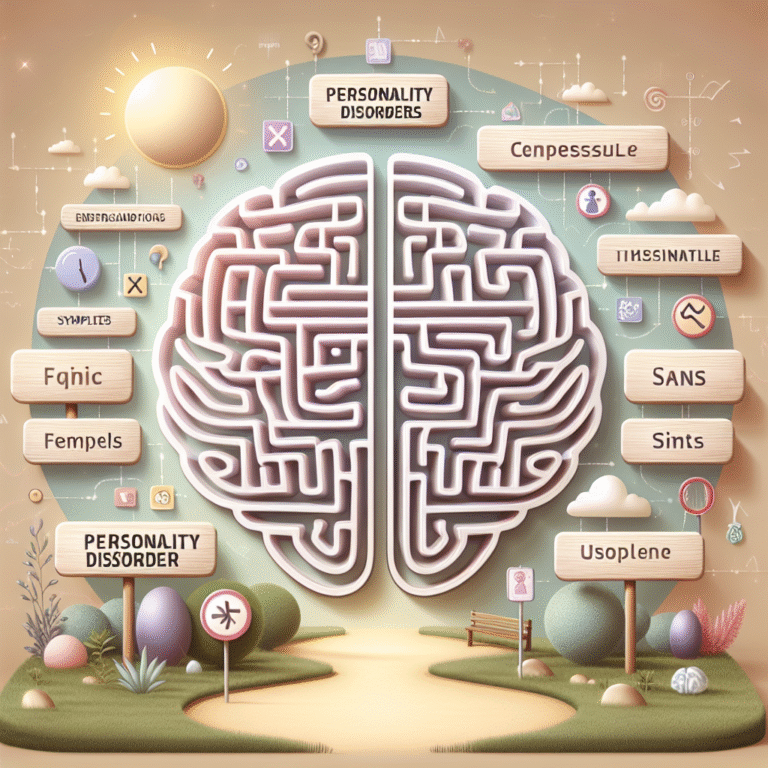The Cognitive Journey: Stages of Development from Infancy to Adolescence – A Proven Guide
Introduction
The Cognitive Journey: Stages of Development from Infancy to Adolescence is a field of study that captures the incredible transformation of the human mind as it grows and evolves. Understanding this journey isn’t just an academic exercise; it’s essential for parents, educators, and anyone who engages with children and adolescents. From the first coos of an infant to the complex reasoning of a teenager, each stage of development marks a unique phase of cognitive expansion.
As we delve into the nuances of this journey, we’ll uncover not only how cognitive skills develop but also the real-world implications this knowledge can have on nurturing and teaching the next generation. This article offers a comprehensive overview of the various stages of cognitive development, enriched with case studies, insights, and practical applications that equip readers to support this phenomenal growth.
Theoretical Background of Cognitive Development
Before we dive into the specific stages of the cognitive journey, it’s crucial to discuss the theories that underpin our understanding of cognitive development. Two of the most influential figures in this field are Jean Piaget and Lev Vygotsky.
Jean Piaget’s Stages of Cognitive Development
Piaget proposed that children move through four key stages of cognitive development, each characterized by unique ways of thinking:
- Sensorimotor Stage (0-2 years): Infants learn through sensory experiences and manipulating objects.
- Preoperational Stage (2-7 years): Children begin to think symbolically but lack the ability to perform operations that are reversible.
- Concrete Operational Stage (7-11 years): At this stage, children begin to think logically about concrete events.
- Formal Operational Stage (12 years and up): Adolescents develop the ability to think abstractly and reason about hypothetical problems.
Vygotsky’s Sociocultural Theory
Vygotsky introduced the idea that cognitive development is heavily influenced by social interactions and culture. He emphasized the importance of language as a bridge between social and cognitive development, suggesting that collaborative learning leads to higher cognitive functioning.
The Cognitive Journey: Stages of Development from Infancy to Adolescence can be understood through the integration of these theories, illustrating how nature and nurture collaborate to shape a child’s cognitive skills.
Stage 1: Sensorimotor Stage (0-2 years)
During the sensorimotor stage, infants explore the world through their senses and motor actions. A critical aspect of this stage is the development of object permanence—the understanding that objects continue to exist even when they cannot be seen.
Case Study: The Peek-a-Boo Effect
Research shows that infants as young as 4-7 months start to recognize that objects exist outside their immediate perception. A study involving infants playing peek-a-boo demonstrated increased engagement and improved memory regarding object permanence, highlighting the learning opportunities parents can harness through play.
| Key Milestones in the Sensorimotor Stage | Age Range |
|---|---|
| Reflexive responses | 0-1 month |
| Coordination of senses | 1-4 months |
| Development of object permanence | 4-8 months |
| Beginning of goal-oriented behavior | 8-12 months |
The cognitive journey during this stage is fundamental and establishes the groundwork for all subsequent learning.
Stage 2: Preoperational Stage (2-7 years)
The preoperational stage is marked by symbolic thinking, which allows children to use words and images to represent objects. However, children this age often struggle with logic, egocentricity, and conservation tasks.
Case Study: Conservation Tasks
In a classic study by Piaget, children were shown two identical glasses filled with the same amount of liquid. When the liquid from one glass was poured into a taller, narrower glass, preschoolers often claimed that the taller glass contained more liquid. This demonstrates their inability to understand the concept of conservation and highlights how children at this stage think differently from adults.
| Cognitive Attributes in the Preoperational Stage | Characteristics |
|---|---|
| Egocentrism | Difficulty in seeing perspectives other than their own |
| Animism | Attributing life-like qualities to inanimate objects |
| Centration | Focusing only on one aspect of a situation or object |
These characteristics of the cognitive journey at this stage can often lead to imaginative play, which is critical for cognitive development.
Stage 3: Concrete Operational Stage (7-11 years)
Moving into the concrete operational stage, children begin to think logically about concrete events. They develop the ability to perform operations that are reversible, understand the concept of conservation, and categorize objects.
Case Study: Grouping Objects
In a classroom setting, children were invited to sort different colored blocks. Those in the concrete operational stage organized them by color, size, and shape. This activity showcased their ability to classify based on multiple attributes, indicating a more sophisticated cognitive process.
| Cognitive Milestones in Concrete Operational Stage | Age Range |
|---|---|
| Logical reasoning in concrete situations | 7-11 years |
| Mastery of the concept of conservation | 7-11 years |
| Development of classification skills | 7-11 years |
As children’s reasoning becomes more systematic and organized, they can address more complex problems, paving the way for advanced thinking.
Stage 4: Formal Operational Stage (12 years and up)
Finally, during the formal operational stage, individuals develop the ability to think abstractly, logically, and systematically. They can consider hypothetical propositions and use deductive reasoning.
Case Study: Hypothetical Situations
A group of adolescents was asked to solve a problem involving the development of an environmental policy. The ability to foresee consequences and utilize abstract thinking was evident in their varying approaches to the problem, showcasing the cognitive journey they had traversed.
| Cognitive Characteristics in Fairly Operational Stage | Age Range |
|---|---|
| Abstract thinking | 12 years and up |
| Ability to use logic in problem-solving | 12 years and up |
| Hypothetical and deductive reasoning | 12 years and up |
With these skills, adolescents can engage in complex reasoning that extends beyond the immediate and tangible, creating a foundation for critical thinking and advanced problem-solving.
Conclusion
The Cognitive Journey: Stages of Development from Infancy to Adolescence is a mesmerizing transformation filled with challenges and triumphs. Each stage is vital, and the development of cognitive abilities can directly impact a child’s academic performance, social skills, and emotional literacy.
By understanding these stages, parents and educators can tailor their approaches to support and nurture children effectively throughout their cognitive journey. Encouraging play, engaging in rich conversations, and providing opportunities for exploration not only foster cognitive development but also empower children to become confident thinkers.
Actionable Insights:
- Engage in Play: Use games that promote problem-solving and critical thinking.
- Ask Open-Ended Questions: Stimulate thinking and reasoning by encouraging children to explain their thoughts.
- Create a Rich Learning Environment: Surround children with diverse learning materials—books, puzzles, and educational toys.
- Encourage Group Activity: Foster interaction with peers to develop social skills and shared learning experiences.
- Acknowledge Individual Differences: Every child’s cognitive journey is unique; patience and understanding will go a long way.
FAQs
1. What is the significance of cognitive development during childhood?
Cognitive development is crucial as it influences a child’s ability to learn, problem-solve, and build meaningful relationships throughout life.
2. At what age does a child begin to understand object permanence?
Children typically begin to understand object permanence between 4 and 7 months of age.
3. How can I support my child’s cognitive development at home?
Engaging in interactive play, reading together, providing rich learning materials, and encouraging open conversations are effective ways to support cognitive development.
4. What are some common signs that a child is in the preoperational stage?
Common signs include symbolic play, egocentrism, and difficulty understanding abstract concepts such as conservation.
5. How can educators incorporate these developmental stages in classroom settings?
Educators can design age-appropriate activities that promote logical reasoning in older children, hands-on experimentation for younger ones, and use collaborative projects to engage different cognitive skills.
The Cognitive Journey: Stages of Development from Infancy to Adolescence is not merely an academic subject but a channel through which we can comprehend and enhance the learning experiences of our children. Let us continue to foster this journey together!


















